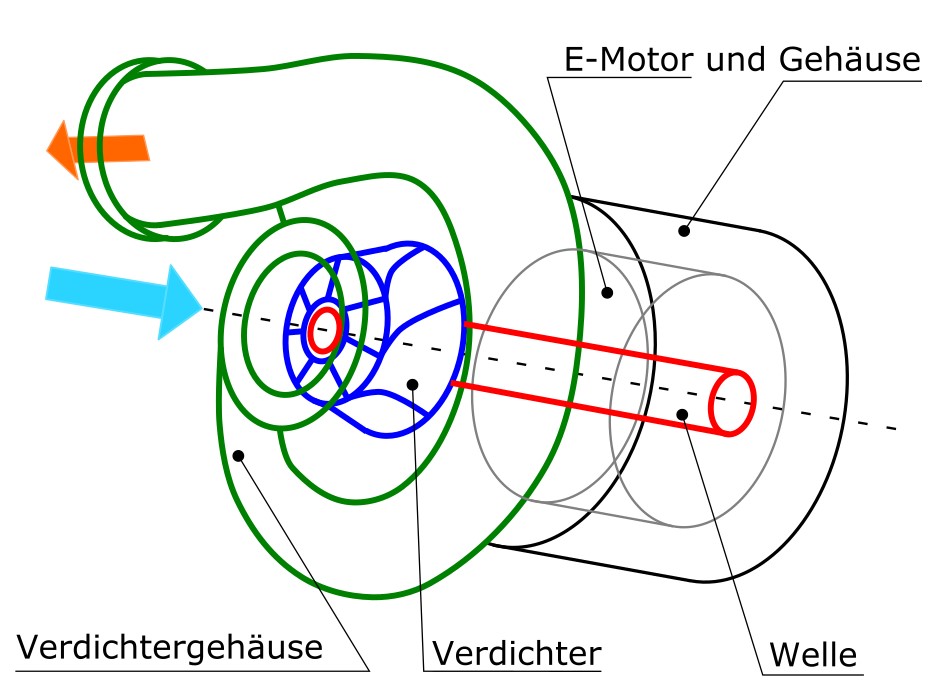Integrated and System Lightweight Design for the Mobility of the Future
In the initialization project “Integrated System Lightweight Design for the Mobility of the Future”, innovative hybrid constructions are applied to increase the efficiency of vehicles.
Motivation
One concept of improving the efficiency of engines is downsizing. To compensate for the resulting power loss, turbochargers, which primarily represent a performance-enhancing measure, are installed. At present, classic turbochargers are coupled fluid-mechanically to the exhaust gas flow. In case of a load requirement, the compressor wheel of the turbocharger must be accelerated to deliver the required fresh air mass flow. This period is colloquially referred to as "turbo lag". One way of preventing this is the fluid-mechanic decoupling of the turbocharger from the exhaust gas flow. In this case, the turbocharger is driven electrically, whereby the quality of the response behavior of the engine can be further increased. In this concept of an e-compressor, the thermal loads are significantly reduced by the decoupling of the components from the exhaust gas flow and thus opens the possibility of using polymer-based lightweight construction. For this reason, an e-compressor is chosen as a demonstrator for the lightweight design of engine components in a hybrid material mix. The aim of the pursued approach is to reduce the inertia of the hybrid lightweight construction in comparison to existing systems and to produce a better response behavior of the engine.

Electric compressor consisting of compressor housing (green), compressor wheel (blue), shaft (red) and electric motor (black). The incoming air is light blue, and the outgoing, compressed air is displayed in orange.
Consortium and Cooperation
The consortium of Fraunhofer and KIT institutes with expertise in construction (Fh-NAS, KIT-FAST - LBT) and simulation (KIT-FAST - LBT, Fh-NAS), process engineering for thermoplastic and thermoset injection molding as well as resin transfer molding (Fh-ICT), FRP shaft manufacturing (KIT-wbk), behavior and damage of plastic-metal hybrids under mechanical loading (KIT-IAM-WK), and validation of the demonstrator (Fh-NAS) includes all the necessary competencies that enable a holistic approach on the problem and the development of an efficient and feasible solution. Through the close linkage between the work packages and regular meetings with the team, an inter-institutional, interdisciplinary and efficient cooperation is ensured.
Lightweight Components and Processes
To present hybrid lightweight solutions in the engine compartment, focus is laid on structural components such as the shaft, compressor wheel and housing. On the process side, processes such as thermoset and thermoplastic injection molding and the wet pressing of preforms produced through fiber blow processes (FIM) for the compressor housing and wheel are available. For hybridization, local, continuous fiber reinforcements or metallic inserts are provided. In addition to an innovative centrifugal casting process, pultrusion is also available for the shaft. The continuous simulation from process to structure enables an easy and cost-effective design.